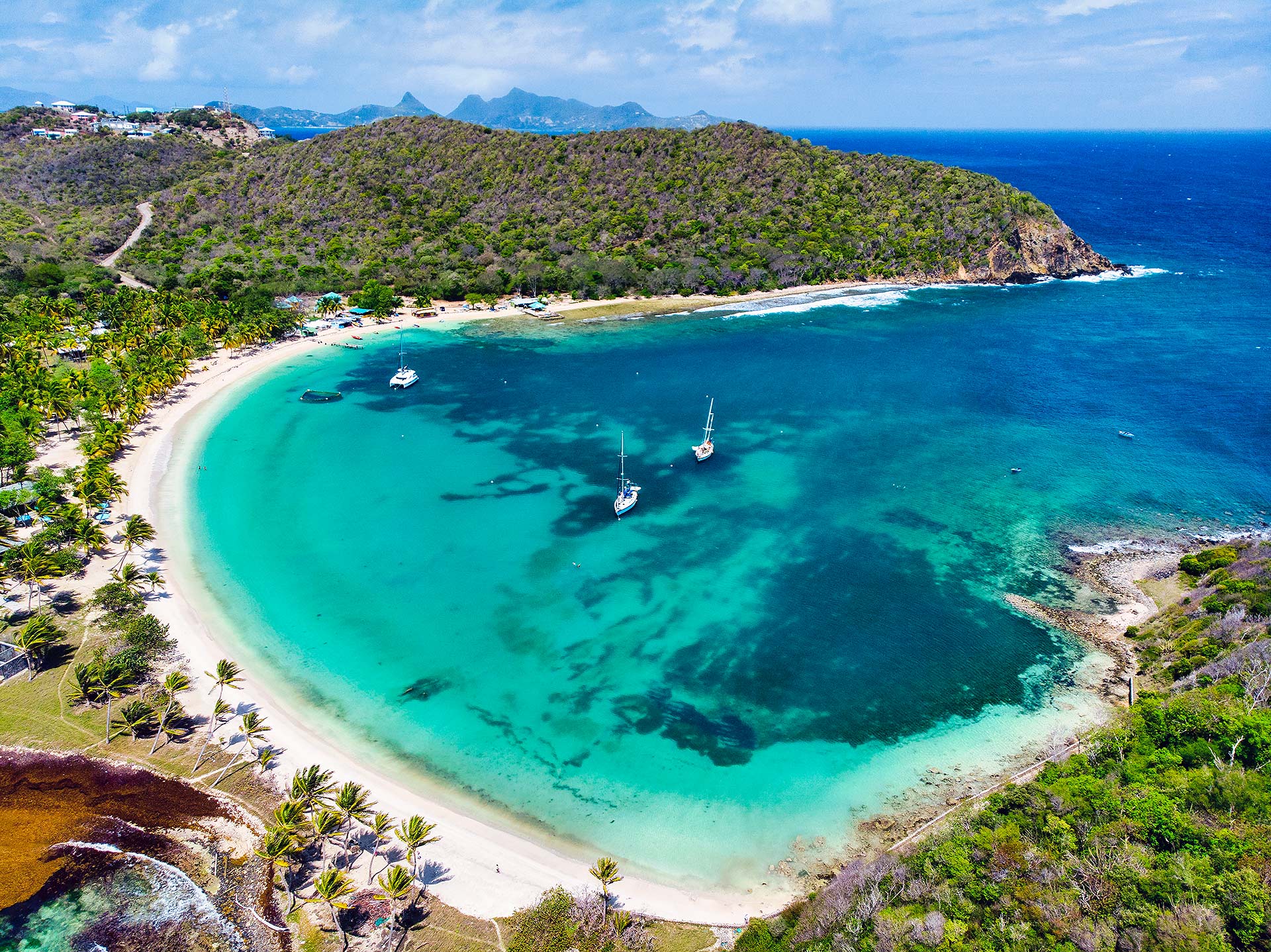Geography and Climate
/aerial-shot-of-cruz-bay-st-john-in-us-virgin-islands-165581255-58dea04e3df78c5162cf9584.jpg)
The Windward Islands are a group of islands located in the Lesser Antilles, in the Caribbean Sea. They are situated to the east of the Greater Antilles and to the west of the Leeward Islands. The Windward Islands include the islands of Dominica, Martinique, Saint Lucia, Saint Vincent and the Grenadines, Grenada, Barbados, and Trinidad and Tobago.
The Windward Islands have a tropical climate, with warm temperatures year-round. The average temperature is around 27 degrees Celsius (80 degrees Fahrenheit). The islands are also subject to heavy rainfall, with an average annual precipitation of over 1,500 millimeters (60 inches). The Windward Islands are also prone to hurricanes, which can cause significant damage to the islands and their infrastructure.
Temperature
The Windward Islands have a warm tropical climate, with average temperatures ranging from 24 to 28 degrees Celsius (75 to 82 degrees Fahrenheit) throughout the year. The warmest months are July and August, while the coolest months are January and February.
Precipitation
The Windward Islands receive heavy rainfall, with an average annual precipitation of over 1,500 millimeters (60 inches). The wet season runs from June to November, while the dry season runs from December to May. The islands are also prone to hurricanes, which can bring heavy rains and flooding.
Wind Patterns
The Windward Islands are located in the trade wind belt, which means that they are subject to strong easterly winds throughout the year. These winds help to keep the islands cool and dry during the dry season. However, during the wet season, the trade winds can bring heavy rains and flooding.
History and Culture
The Windward Islands boast a rich tapestry of history and culture, shaped by a diverse array of influences. From their pre-colonial era to their present-day status, these islands have witnessed significant events and developments.
The indigenous peoples of the Windward Islands, the Kalinago, established thriving communities before the arrival of European explorers. With the advent of colonization, the islands became a hub for European powers, particularly France and Great Britain, who vied for control of their strategic location and lucrative resources. The legacy of this colonial era is evident in the islands’ architecture, infrastructure, and cultural practices.
European Influences, Windward islands
European colonization had a profound impact on the Windward Islands. The introduction of plantation economies, particularly sugar production, led to the influx of African slaves, who brought their own cultural traditions and beliefs to the islands. The fusion of European, African, and indigenous cultures has resulted in a vibrant and unique blend that characterizes the Windward Islands today.
African Heritage
The African diaspora played a pivotal role in shaping the culture of the Windward Islands. Enslaved Africans brought with them their musical traditions, religious beliefs, and culinary practices, which have become integral to the islands’ cultural identity. African-influenced music genres, such as calypso and soca, are celebrated throughout the region, while traditional African dishes have been adapted and incorporated into local cuisine.
Present-Day Status
Today, the Windward Islands are a vibrant and diverse region, with each island possessing its own unique character. They are independent nations, with their own governments and economies, and they play an active role in regional and international organizations. The islands have a strong sense of cultural identity, and they continue to preserve and celebrate their rich heritage while embracing modern influences.
Tourism and Economy: Windward Islands

The Windward Islands boast a thriving tourism industry, with visitors drawn to the region’s stunning beaches, lush rainforests, and vibrant culture. Popular destinations include the islands of Dominica, Grenada, St. Lucia, and St. Vincent and the Grenadines.
Tourism is a major economic driver for the Windward Islands, providing employment and stimulating infrastructure development. The industry supports a wide range of businesses, including hotels, restaurants, tour operators, and craft shops.
Popular Destinations
- Dominica: Known for its lush rainforests, including the UNESCO World Heritage Site Morne Trois Pitons National Park, and its excellent diving and snorkeling spots.
- Grenada: Home to the iconic Grand Anse Beach, known for its white sands and crystal-clear waters, and the historic Fort George.
- St. Lucia: Famous for its dramatic Pitons, two volcanic peaks rising from the sea, and its luxury resorts and spas.
- St. Vincent and the Grenadines: Comprises a group of 32 islands and cays, offering a variety of beaches, dive sites, and hiking trails.
The Windward Islands, a chain of islands in the Caribbean Sea, are often in the path of tropical storms and hurricanes. For example, in 2018, Hurricane Beryl passed through the Windward Islands, causing significant damage. You can find more information about the path of Hurricane Beryl here.
The Windward Islands are home to a variety of ecosystems, including rainforests, coral reefs, and mangrove swamps.
Di Windward Islands deya na group a ailen we deya locate na di eastern Caribbean Sea. Dem a get plenty hurricanes and tropical storms, and di path of Hurricane Beryl na one of di most recent ones. Check out di path of Hurricane Beryl to see how e move through di islands.
Di Windward Islands a still recovering from di damage, but dem a strong people and dem will rebuild.